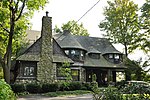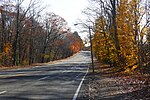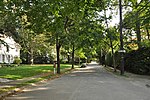Beaver Country Day School
1920 establishments in MassachusettsBuildings and structures in Brookline, MassachusettsChestnut Hill, MassachusettsEducational institutions established in 1920Private elementary schools in Massachusetts ... and 4 more
Private high schools in MassachusettsPrivate middle schools in MassachusettsPrivate preparatory schools in MassachusettsSchools in Norfolk County, Massachusetts
Beaver Country Day School is an independent, college-preparatory day school for students in grades 6 through 12 founded in 1920. The school is located on a 17-acre (69,000 m2) campus in the village of Chestnut Hill, Massachusetts, near Boston. Beaver is a member of the Cum Laude Society, the Independent Curriculum Group, and the National Association of Independent Schools. Beaver is accredited by the New England Association of Schools.
Excerpt from the Wikipedia article Beaver Country Day School (License: CC BY-SA 3.0, Authors).Beaver Country Day School
Hammond Street,
Geographical coordinates (GPS) Address Phone number Website Nearby Places Show on map
Geographical coordinates (GPS)
| Latitude | Longitude |
|---|---|
| N 42.31838 ° | E -71.16444 ° |
Address
Beaver Country Day School
Hammond Street 791
02467
Massachusetts, United States
Open on Google Maps










